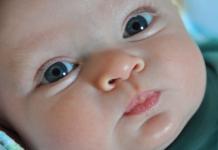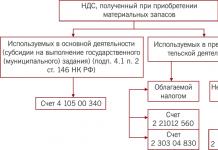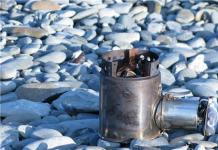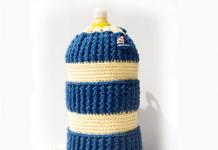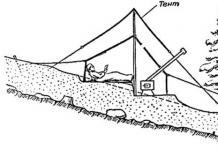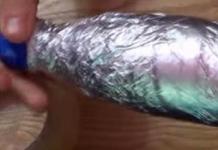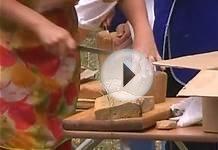What determines the success of the rental business? (part 1)
The success of the rental business is determined by the attractiveness of the premises for tenants and how effectively you use the potential of your property.
The attractiveness of the premises is achieved by the fact that from the very beginning of its creation, you look at it through the eyes of a future tenant.
When creating real estate for rent for a store, you need to provide a free layout, display windows, enough space for placing a sign above the entrance. But the most important thing that retailers will be interested in is the location of the store.
To subscribe to the book, go tohttp://www.konstantin-demchuk.com .
Location.
In all books about real estate, special attention is paid tosuccessfullocation. AND, Maybe, not in vain, because people stubbornly create more and more new objects in completely inappropriatefor thisplaces. Most recently, in 2008-2010, half of Moscow was empty. And in any other city of the country, the mass of premises did not have tenants. It happens that the reason for this is illiterate property management, but in the bulk - this is a consequence of the wrong location.
The premises, located in a good place, brings a lot of pleasant moments to the life of the owner.
Firstly, the rental price of the premises will be one of the highest in the city. The higher the rental income, the higher the return on investment and the more expensive the cost of the premises.
Secondly, a queue will be created from those wishing to rent a room. This means that the area will not be idle, and, taking advantage of the competition of tenants, it is always possible to raise the rent.
Thirdly, in the event of economic shocks, premises located in a good location are the first to emerge from the crisis. And in economically stable times, such real estate has the maximum increase in rental rates.
A room in a residential area may also be in demand.But the tenants of such premises are often start-up entrepreneurs who decide to open their first business close to home. The cost of rent will definitely be minimal. On top of that, such tenants often "die". And it is not a fact that after the death of another enthusiast, you will find the next one in his place.
What is a good location? It has both qualitative and quantitative characteristics.
First, about the quantitative characteristics. First of all, it is highpedestrian traffic. It is pedestrian, do not confuse it with a car!
Remember how often you don’t want to stop and go to the store while driving, even if you really need to. For the sake of experiment, look into a retail outlet located on the path of intense, but exclusively car traffic. The store, if it is not a shopping center, will be almost empty. Few of the tenants will like such a place.Therefore, pedestrian traffic is important!
Ideally, at least 500 people per hour should pass by the doors of the store premises. This is definitely a good place with high traffic.
Worse places are characterized by moderate foot traffic of about 200-500 people per hour. Premises in such a place can still be rented out for good money.
But, if less than 200 people per hour pass by the doors of the store, then most likely the premises are located in the wrong place. And it is better not to mess with such real estate. The figures for foot traffic given above are typical for large cities. For smaller cities, the numbers will be somewhat lower.
In addition to traffic, having other shops in close proximity is very helpful. The bigger, the better. It may seem that retail premises will compete with each other for tenants, losing in the price of rent. But it's not! Each new store increases the overall flow of customers. It turns out something like an open-air shopping center. There are more buyers, rent is higher. Only a large shopping center can change the situation for the worse. To attract tenants, he, painlessly for himself, can reduce the price of rent, which will force small premises to adapt to him, losing a lot of income.
The qualitative characteristics of a good location are people's opinions about a particular area. Despite the same pedestrian traffic, renting a room in the "central" area will cost more than in the neighboring one. Each city has its own "main" shopping street. In Moscow, for example, this is Tverskaya Street. Renting retail space on such a street is more of a matter of brand image.
If you manage to combine a high pedestrian flow and a "central" street, you will get a very good room.
Pedestrian flows have a very interesting feature: they are uneven. There are small areas where traffic is maximum. Outside such areas, the flow sharply "shallows" and often two or three times. The retail space should be located in areas of maximum flow or as close to it as possible. Sometimes, just ten meters from the main traffic is enough for almost no one to enter the store. Therefore, tenants prefer premises located on the first line of houses, i.е. in close proximity to the sidewalk and the main roadway.
Obviously, the most important factor in the success of a rental business is its location. But how do you determine a good location in your city?
The answer to this question will be given in detail in the seventh chapter: "How to create a commercial premises from scratch: 5 steps in 180 days."
Want to get the book for free?
Visit
http://www.konstantin-demchuk.com.
Hello, I'm Alexander Harkness, the software engineer in charge of the SimCity transportation system.
I will tell you how the transport system of the city works.
The movement of cars on the road
Every vehicle in the game has a basic set of stats such as speed, acceleration, and deceleration. These values depend on the type of vehicle (motorcycle, car or truck), its value, and whether the vehicle carries cargo or not.
rebuilding
Transport tries to change lanes in advance when approaching an intersection in order to make a turn. Therefore, if you need to turn right, then change lanes to the right, if you need to turn left, then to the left. Those cars that go straight at the intersection can move in any lane. Cars can overtake slow moving vehicles. Firefighters, police and ambulance will try to overtake everyone in a hurry to help.
Flaws
Unfortunately, we did not allow the cars to turn around where they liked and limited the turning places to intersections so as not to create additional traffic problems. Therefore, on long roads without intersections, you have to travel a long way before turning around. Keep this in mind when designing roads to avoid congestion.
Emergency vehicles
All emergency vehicles have the ability to change traffic lights on their way to green. When approaching an intersection, the green light turns on and traffic begins. If the traffic congestion does not disappear when green is turned on, then the traffic light switches back to red to avoid a more serious one. traffic jam with heavy traffic.
Stop on the road
All emergency vehicles stop outside the building, temporarily blocking traffic on that lane for a certain amount of time, depending on the situation. On a two-lane road, one-way traffic is completely blocked, with 4 or 6 lanes, cars go around a stopped car, of course, if they don’t need to go to this particular building.
Last changes
In a recent update, we have added some new features, such as high priority for an ambulance over other vehicles. This change allowed the lane to be vacated as soon as the ambulance left the garage. Previously had to wait to go to the main street. The second change made it possible to use any lane on the road, regardless of whether it is required to turn right or left.
crossroads
At this type of intersection, the priority is given to the vehicle that arrived first. This rule does not work in two cases:
- traffic flows do not intersect
- cars cannot start moving because the road is blocked by a traffic jam
Traffic light
Traffic lights are used to improve traffic flow at intersections. During testing, it turned out that the volume of traffic passing through the intersection increased by 4-5 times. Traffic lights respond to traffic. If there is no car on one side of the intersection, then on the other side the green light will be on for a long time. The wider and higher the road, the longer the green traffic light stays on.
Side street turns
They can be incredibly useful in creating a thoroughfare across a city where traffic can go non-stop at traffic lights and stop signs. They can only stop to let pedestrians through.
Crossroad construction
To increase capacity, it is recommended to use T-junctions rather than a direct intersection of two roads with 4 directions of travel. In this case, there will be much less cars that need to turn through the oncoming traffic and will not have to let oncoming traffic pass.
Traffic routes
To understand how the routing system works, I'll talk a little about road building.
Roads
Roads can consist of one or more segments. Path - the distance between points, the entire path is divided into segments by road intersections. The number of segments varies depending on the curvature of the path or terrain. Thus, a direct path usually contains only one segment.

Capacity and throughput
Each segment has its own capacity. Let's say the whole road can be divided into 4 segments. So, in this case, segment 4 is 10 meters long, segments 2 and 3 are 50 meters long, and the first segment is 200 meters. Summing up these lengths, we get the path that the car must travel.

In addition, traffic congestion is calculated on these sections. These values are calculated continuously and conventionally divided into thresholds B of 25%, 50% and 75% of the throughput.
What affects throughput
Let's look at the video as an example:
The diagram shows the segments and values that we talked about above. Under this set of circumstances, all residents' vehicles will leave their homes and use Segments 5, 6, 2, and 1 to get to their jobs. Segment number 6 becomes congested due to traffic, and all traffic jams significantly affect throughput. Therefore, vehicles will use segments 4 and 3.

However, you can influence traffic congestion by dividing the path into several segments. Cars choose alternative routes that, although they are longer, are less loaded.

This is not a perfect solution and we are working on improving traffic routes.
The peak traffic usually falls at 6 am and 6 pm. When you see that there is a large congestion of cars on the road, then you need to plan carefully. When placing stops, use hints - the green areas show how far Sims can walk to the bus stop. Since buses do not follow certain routes, it is best to place stops on one side of the street so that buses do not have to turn around when moving to the next stop.

you also can upgrade roads to avenues so that cars do not stand in traffic jams. Plan routes that cover high population densities and connect places of residence with places of work. Place tram stops so that residents can get to work by public transport.
I hope these tips will help you in planning and building your ideal city without traffic jams. Just remember that brochures alone will not solve all your traffic problems.
Car traffic is one of the most profitable types of traffic. The hunt for car traffic can take place both through social networks and through many other sites on the Internet.
Car traffic in social networks. You can lead groups and publics, and you can also conduct analytical work on the network. First you need to determine who your client is. Motorists will not necessarily be in groups or subscribe to publics. How to track them in this case ? For example , by position . Top-managers, directors, IT-specialists at the age of about 30 are unlikely to do without a car. At the same time, do not forget that promotion on the Internet takes a lot of time. That is why it is very illogical to ignore the possibilities of already promoted publics. To create and promote your own channel on the social network, you will need about 3-4 months. While you can start getting leads right now. To do this, you just need to agree on a paid (or free) posting in one of the groups or publics promoted by someone.
You can also receive car traffic in large quantities from the social network Instagram. Moreover, the topics of accounts that actively bring such traffic can be very different: from car loans, pre-tuning insurance, test drives and so on. Experienced webmasters and marketers advise creating not 1 or even 2-3 accounts, but start and promote 5-6 profiles. What does it give you? You can collect much more segmented an audience that , ultimately , will still be redirected to one point , one link .
Forums and expert communities. Often, car traffic is collected for specific offers: the sale of used premium cars, auto services, and so on. At the same time, motorists tend to make decisions based on the opinions, advice and feedback of other people, as well as experts. Expertise is what you need to promote first. Even in order for a person to just click on your link, you need to gain his trust.
There are many forums and communities specialized sites where you can maintain your own thread , write articles and answer questions from discussion participants and ordinary visitors to the site . You must know the subject and be able to anticipate the needs of the market. In the automotive theme, it is impossible to sell just emotions, without logic. Firstly, because the majority of Internet users who are interested in the automotive topic are men. Secondly, because the services and goods in this niche are quite expensive and many tend to consciously approach their choice. Expertise in this niche sells just fine. If you need car traffic , but you yourself are not an expert , then you need to seek help not just from copywriters , but from real professionals . You can start your own blog with expert interviews.
teaser networks. Teaser networks can generate a lot of traffic, but, unfortunately, in most cases, such visitors will be irrelevant to your topic. So why should you try working with teasers? Firstly, traffic here can cost a penny. Secondly, it can be "warmed". This means that visitors can be redirected not immediately to the product or service sale page, but to the subscription page for some interesting e-mail newsletter.
Also, do not forget that you can segment the audience by advertising channels. For example , those who came from teaser networks to show cheaper products than those who came from search , social networks or by clicking on a contextual advertising ad .
Concluding the article, I would like to say an important thing. It lies in the fact that you need to learn to think the way marketers think. This applies not only to car traffic. Marketers first draw up a portrait of the desired target audience, and then ask themselves where it can be found in large numbers. Think about what sites , applications , social networks and blogs are actively visited and read by motorists . And start compiling a list of such resources. The information put down on paper can give rise to new ideas about traffic.
The decision to open a retail outlet entails a lot of questions: “Where to look for premises?”, “How to calculate the attractiveness of a place and human traffic?”, “What average revenue can be targeted?” and the main question - “Will the expensive rent in a passing place pay off?”. All these quantities are empirical and can be predicted and calculated. In this article, we will consider the main actions that anticipate the opening of a store or catering facility: geomarketing research, analysis of the area and flows, calculation of potential traffic and turnover of a future outlet.
To a new store sparkling with a cheerful sign “We are open! Welcome!” has really become a place of pilgrimage for buyers, not onlookers, you should not rush to rent the most convenient premises in the most accessible point of the city, but carry out a number of marketing activities to justify the attractiveness of this particular premises.
Entrepreneurs often face two problems:
- a new point does not pay for itself due to a reduced sales turnover (few checks);
- the new point is unprofitable due to the reduced check (low average check).
Both that, and another - a consequence of an erroneous arrangement and marketing policy of the enterprise. Omitting the moment that service and advertising influence the popularity and level of sales, we will consider the algorithm of measures for finding a place and calculating the profitability of a retail facility using the example of a standard stationery store.
Work planning
The list of works for opening a store includes:
- Definition of the target audience and anchor products.
- Determining the most optimal neighborhood for a retail facility.
- Calculation of the average check.
- Calculation of the threshold of self-sufficiency.
- Geomarketing research and analysis of a specific object.
- Calculation of flows and turnover of the outlet.
It will take an experienced specialist about 6-8 days to complete all these works, most of the time will be devoted to collecting statistical data on the qualitative and quantitative composition of human traffic (the flow passing in the immediate vicinity of the trading facility).
Stage 1: definition of input requirements and indicators
The development of statistical input information is a purely office work of a marketer.
Definition of the target audience and anchor products
First of all, we will treat our potential stationery store as an already operating business and determine what product and for what audience we will operate:
| Product groups (indicative list) | Segment of potential consumers |
||||
| Students and schoolchildren | office staff | young mothers | Small business |
||
| A4 paper for printers | |||||
| Self-adhesive film Oracal | |||||
| Notebooks of all formats | |||||
| Whatman and paper sizes A3-A1 | |||||
| Paints and gouache | |||||
| Pens and pencils | |||||
| brushes, glues, | |||||
| Paper clips, erasers, buttons | |||||
| Organizers and folders | |||||
| Diaries, desk sets, business card holders, hole punchers | |||||
| Templates, frames, price tags | |||||
| Typesetting stamps, scissors. | |||||
Thus, we see that the most interesting for the store are two categories: small business and students (the intersection of these groups is 78%). The rest of the audience is of secondary interest.
Determination of the most optimal neighborhood for a retail facility
Based on the potential audience, we will describe the desired neighborhood for a retail facility (hereinafter referred to as TO). Our stationery store can effectively function next to a large shopping center (or as part of it), close to universities, student libraries.
Small businesses, which we consider as one of the two key groups, are private shops, cafes, small firms (up to 20 employees) operating nearby. In such companies, there are no wholesale purchases of stationery, and everything is purchased as needed.
Calculation of the average check
If the new TO is not a single one and there are already a number of functioning stationery stores, then the total average check over the network, where peak indicators are excluded, can be taken as a basis. If the store is the first of its kind, then we take the cost of all products marked as attractive to key groups, sum up and get the arithmetic average cost per unit of production. Multiply the result by 2.5 - this is the average number of goods in a check of a retail non-food store (small goods in a group up to $10). The amount received is our expected average check. This calculation is very rough, but close to a realistic forecast.
Calculation of the threshold of self-sufficiency
So, we have a group of potential consumers, anchor products (common for all groups - these are sales priorities), the expected average check. It remains to figure out what the “dirty” profitability should be in order for the business to be profitable.
So, with an average check of 200 rubles, a markup on goods of 30%, operating expenses (approximately taken into account rent, taxes, salaries, administrative expenses) of 70,000 rubles, for the store to pay for itself, it is necessary to trade for 234,000 rubles, which is 1170 checks per month (39 checks per day).
Quite a lifting figure with the right organization of the store.
Stage 2: geomarketing research and analytics
Such a study is being carried out for a specific TO (premises) selected for a store. For the analysis of the pedestrian flow, the selected target audience is taken into account. Analytics is formed according to a specific template, which takes into account:
- General characteristics of the location
- Location
- Description of the object itself, history
- Characteristics and description of the area
- Preferential objects and population
- Social infrastructure of the microdistrict
- Analysis of pedestrian and traffic flows
- Description of the nature of traffic
- Quantitative indicators of the traffic flow and the probability of contact with the object of study
- Description of pedestrian flows, quantitative indicators and leading audience during the study period
- Commercial Infrastructure Analysis
- Description of the commercial environment of the neighborhood
- Closest Neighborhood
- Competitive environment
- Advertising structures and navigation
Flow Analysis
Pedestrian traffic is analyzed for at least three days at different times of the day and the number of people passing by, their age, gender, and compliance with the target audience segment are recorded:
| June 25 | 27th of June | June 29 | ||||
|---|---|---|---|---|---|---|
| cf. quantity, person/hour | average number, person/hour | Share in total quantity | average number, person/hour | Share in total quantity |
||
| from 9.00 to 10.00 | ||||||
| from 13.00 to 14.00 | ||||||
| from 18.00 to 19.00 | ||||||
| of the total number of men for 3 days,% | of the total number of women for 3 days,% | The total number of people during the study period | Share in total quantity |
|||
| June 25 | Total cf. quantity, person/hour | |||||
| cf. quantity, person/hour | cf. quantity, person/hour | |||||
| from 9.00 to 10.00 | ||||||
| from 13.00 to 14.00 | ||||||
| from 18.00 to 19.00 | ||||||
| 27th of June | Total cf. quantity, person/hour | |||||
| cf. quantity, person/hour | cf. quantity, person/hour | |||||
| from 9.00 to 10.00 | ||||||
| from 13.00 to 14.00 | ||||||
| from 18.00 to 19.00 | ||||||
| June 29 | Total cf. quantity, person/hour | |||||
| cf. quantity, person/hour | cf. quantity, person/hour | |||||
| from 9.00 to 10.00 | ||||||
| from 13.00 to 14.00 | ||||||
| from 18.00 to 19.00 | ||||||
| from 9.00 to 10.00 | from 13.00 to 14.00 | from 18.00 to 19.00 | average relative,% | from 9.00 to 10.00 | from 13.00 to 14.00 | from 18.00 to 19.00 | average relative,% |
|
| from 9.00 to 10.00 | from 13.00 to 14.00 | from 18.00 to 19.00 | average relative,% | from 9.00 to 10.00 | from 13.00 to 14.00 | from 18.00 to 19.00 | average relative,% |
|
| from 9.00 to 10.00 | from 13.00 to 14.00 | from 18.00 to 19.00 | average relative,% | from 9.00 to 10.00 | from 13.00 to 14.00 | from 18.00 to 19.00 | average relative,% |
|
Important: if the place is chosen correctly, then the highest indicators will be in those groups that are defined as the target consumer segment (real analytical data are used in the examples).
Calculation of the potential turnover of the outlet
So, we got a cross-section of pedestrian activity in the area and its qualitative analysis, and we see that the average number of priority traffic for us is about 80 people per hour.
When the store is open from 9 a.m. to 8 p.m. (it makes no sense to close earlier in this area, because the flow analysis indicates high evening activity), the total potential throughput of the outlet by the target segment is:
21 hours * 80 people = 1680 people per day, and the total flow is 12 thousand people. Those. the target segment is 14% of the total flow.
According to average marketing statistics, with the correct location of an attractive store sign, you can count on 2.5% of the entire flow of the target segment as real buyers, which is from 42 people out of 1680, this corresponds to the TO self-sufficiency calculations.
Plus, the average TO can count on 0.5-0.7% of random sales from the total flow: 12,000 -1680 = 10320 * 0.5% = 51 sales per day due to impulsive and spontaneous sales. By the way, this distribution suggests that the chosen place does not quite correspond to the target audience, ideally there should be less random sales, and the share of target audience in the general flow should be larger.
In total, the average projected turnover of the store will be: 42 +51 = 93 checks * 200 rubles. \u003d 18,600 rubles / day or 558,000 rubles / month. From this amount, you can subtract the percentage of risk (on average, it is taken as 20%) and get a realistic forecast - 446,000 rubles. per month will bring an outlet with those indicators that are taken as an example in this article.





